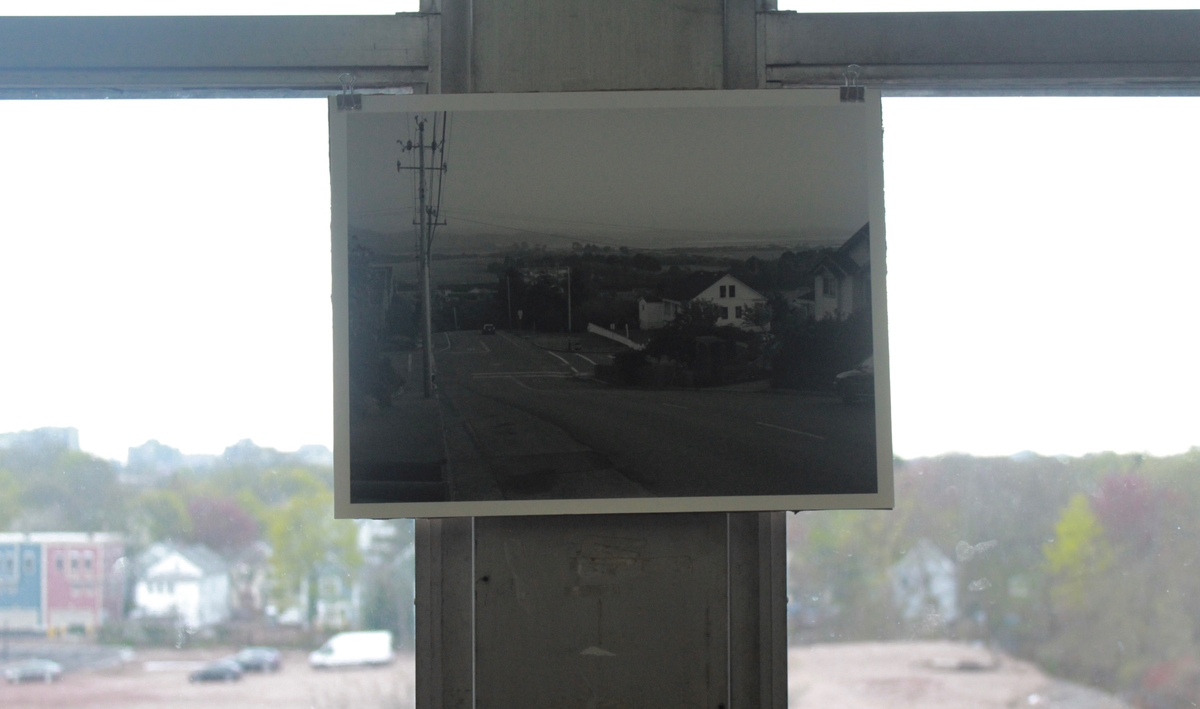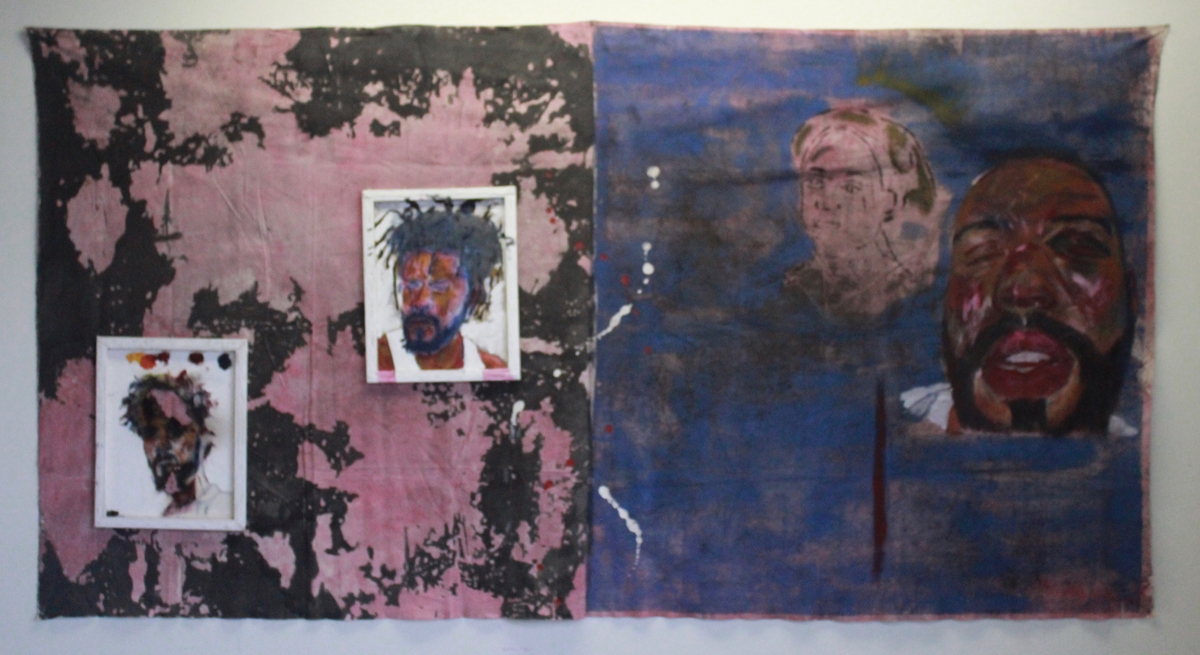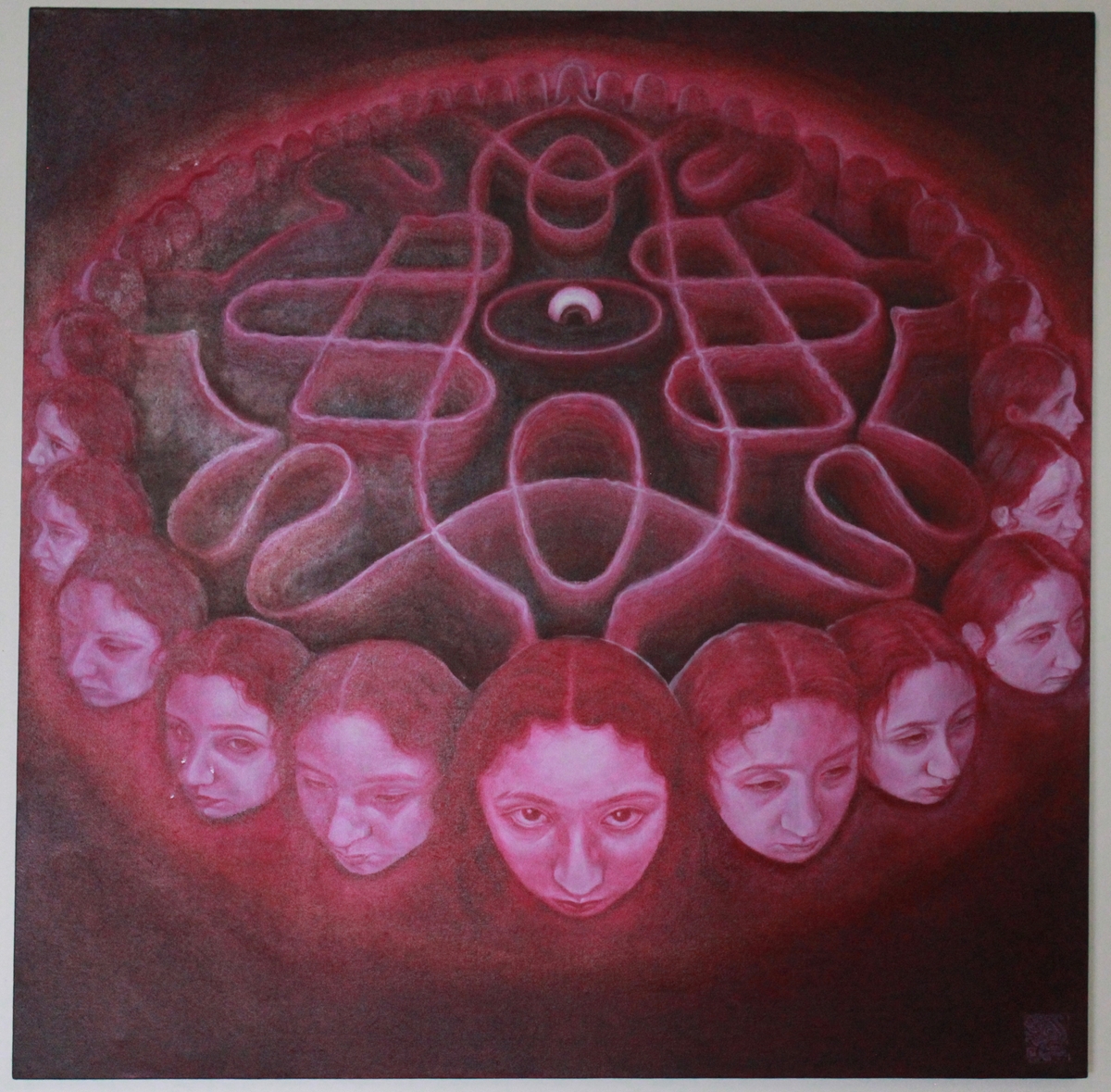
Amartya De
Sequoia.
The photograph is from northern California, and photographer Amartya De said it was his roommate’s favorite of his pictures at the time because “it shows the landscape.” It was a city, but not really a city; it was a place close to the redwoods. De was there from Calcutta, learning how to become an artist, and learning that the practice of making art and the practice of surviving weren’t all that different.
“I realized all these things in America are kind of related,” De said. “How do you survive as an artist? How do you make money? How do you live in a tree and still survive?”
Five years and a pandemic later, he had moved to New Haven, gotten an MFA in art from Yale and stuck around. Now, he said, New Haven reminded him in some ways of Calcutta. He put Sequoia up in the studio space, against the window, to invite comparison between the scene in the image and the scene out of the window — of Newhallville, of Science Park, of the city below. He made connections across space, from Connecticut to California to Calcutta. But it was also across time, from his childhood to adolescence to the adult he is now.
De’s photograph, and its connection to its surroundings, was all part of “Observe,” Omola Studio’s second installment of APRiL (Artists Prospering Really is Limitless), featuring works by De, Kulimushi Barongozi, Kaelynne Hernandez, Miguel Mendoza, and Rex Morris. The first iteration happened last spring, on a ground-floor space in 91 Shelton in Newhallville. This one happened in the same building, five floors up, for Saturday and Sunday, April 20 and April 21.
As curator MO of Omola Studios described it, the show invited viewers “to delve into the relationship between artwork and observer. Inspired by Diego Velázquez’s Las Meninas and Vivian Maier’s photography, this presentation for APRiL showcases artists working across mediums, offering a diverse perspective on the theme of observation, spanning paintings, photography, and motorized sculpture.” The works themselves in many ways took it a step further, as they had something to say about the space they were in, and the city around them.

Amartya De
Crossing at Sunset.
“Amartya is interested in the disjunction between photography as a decisive moment in the documentary tradition and its descriptive qualities in relation to painting or sculpture,” MO wrote in an accompanying text. “Using analog image capture techniques and digital postproduction and printing techniques,” De explores “photography’s observable qualities in relation to people and our landscape while channeling a mood or a certain attention to the passage of time.”
Crossing at Sunset, the photograph of the kids in the boat, is from Calcutta. Out of frame, De explained, was a landfill on fire, a “flaming mountain,” he said. On the edge of that landfill were families growing vegetables: cornfields that made De think “this is America”; other rows of vegetables that made De think “this is India.” The photograph was posed in the sense that the kids knew they were getting their picture taken, but De told them they could do what they wanted.
“They’re so happy,” De said. “And the boat is flooding.”
It reminded him of the optimism people have when times are bad, that “it can only get better from here,” he said. He knew people in India who thought that when India was a poorer country, before it experienced its latest wave of development. Now, he noted wryly, Calcutta has what many cities in richer countries has, but “certain things get overlooked.”
None of those details could be pulled from the picture itself, of course. But their weight can be felt, not just in the sinking boat, but in the mayhem on board, a friction between optimism and realism, between what we want to happen and what is already happening, and the difficulty of reconciling the two.

Miguel Mendoza
Bàdu Dxaapa Winni Sicarú.
A similar sense of boundary crossing, of space and time, pervades Miguel Mendoza’s work. “Miguel’s art is steeped in magical realism, reflecting his cultural heritage from Oaxaca, Mexico. His portraiture, predominantly in oil, honors the strength and beauty of Hispanic women who serve as daily inspirations. Yet, Miguel’s art extends beyond boundaries, capturing a diverse spectrum of individuals worldwide. Through this diversity, Miguel prompts viewers to contemplate the universal human experience, fostering a deeper understanding of interconnectedness across cultures,” MO wrote. His painting — the title, in Zapotec, translates to “beautiful girl” — could depict three different women, or the same woman at three different times; perhaps, in the way, those are the same thing.

Kulimushi Barongozi
The Longer You Have Me, The More I Disappear I and II.
Meanwhile, the paintings of DRC-born Kulimushi Barongozi “serve as a profound means of expressing reactions to personal history, often painted on both sides, symbolizing multiple versions of themselves, embodying the fluidity of identity and perception,” MO wrote. “Having encountered life’s challenges, including death and stagnation, Kulmushi’s art becomes a vessel for addressing and coping with these universal struggles.… Kulimushi finds solace and purpose in the act of creation, where writing and painting intersect to discover meaning.” That the works spill off the walls have the effect of “inviting viewers into the world of creation and interpretation.” We can all find our own way in, and come out in different places.

Kaelynne Hernandez
Past Selves.
On another wall of the studio space was the highly symbolic work of Kaelynne Hernandez, who “explores figurative painting as a means of documenting and articulating lived experiences. Their art serves as a powerful tool for reclaiming their voice and sharing authentic narratives in a world often dominated by predefined stories,” MO wrote. Hernandez’s paintings connect with the concerns of the other artists in several ways, as they “delve into themes of intersectionality, identity, diaspora, fractals, mysticism, the body, and chicanismo.” Like the artists around them, Hernandez is also interested in finding connections, a way forward, in the place around them. “Their art consistently highlights the interconnectedness between the body, Earth, and cosmos, aiming to foster awareness and compassion among viewers.”
Given the way each artist was interested in connection and change, it was in some ways fitting that the show lasted for just a weekend. People streamed in and out of the space while this reporter was there. Many of them came with friends. Others ran into acquaintances they hadn’t seen in a while. The audience embodied many of the themes the painters explored.
In the middle of the room was a motorized sculpture from Rex Morris that was, on one level, “an exploration of memory, both personal and environmental,” MO wrote. “Their sound sculptures utilize motors and common materials to produce repetitive, droning sounds, reflecting the futile nature of modern existence.” It also had a lot in common with the searching soundtracks created by New Haven’s own experimental musicians, sounds made on stages across town. Each in their own way, the artists called attention to the struggles many in town are going through. They also pointed out that we’re not doing it alone.